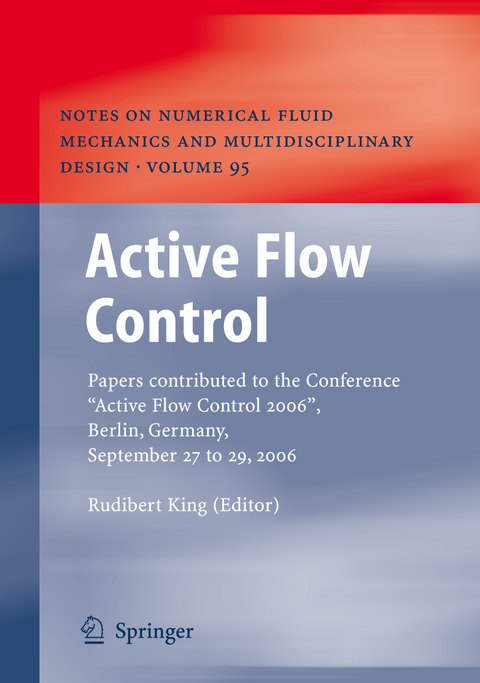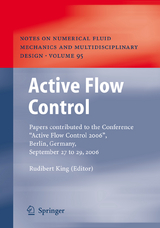Active Flow Control
Springer Berlin (Verlag)
978-3-540-71438-5 (ISBN)
The Taming of the Shrew: Why Is It so Difficult to Control Turbulence?.- The Taming of the Shrew: Why Is It so Difficult to Control Turbulence?.- Actuators.- Electromagnetic Control of Separated Flows Using Periodic Excitation with Different Wave Forms.- Pulsed Plasma Actuators for Active Flow Control at MAV Reynolds Numbers.- Experimental and Numerical Investigations of Boundary-Layer Influence Using Plasma-Actuators.- Designing Actuators for Active Separation Control Experiments on High-Lift Configurations.- Closed-Loop Active Flow Control Systems: Actuators.- State Estimation and Feature Extraction.- State Estimation of Transient Flow Fields Using Double Proper Orthogonal Decomposition (DPOD).- A Unified Feature Extraction Architecture.- Air Foils.- Control of Wing Vortices.- Towards Active Control of Leading Edge Stall by Means of Pneumatic Actuators.- Computational Investigation of Separation Control for High-Lift Airfoil Flows.- Steady and Oscillatory Flow Control Tests for Tilt Rotor Aircraft.- Cavities.- Reduced-Order Model-Based Feedback Control of Subsonic Cavity Flows - An Experimental Approach.- Supersonic Cavity Response to Open-Loop Forcing.- Bluff Bodies.- Active Drag Control for a Generic Car Model.- Continuous Mode Interpolation for Control-Oriented Models of Fluid Flow.- Turbomachines and Combustors.- Active Management of Entrainment and Streamwise Vortices in an Incompressible Jet.- Active Control to Improve the Aerodynamic Performance and Reduce the Tip Clearance Noise of Axial Turbomachines with Steady Air Injection into the Tip Clearance Gap.- Optimal Flow Control and Numerical Studies.- Drag Minimization of the Cylinder Wake by Trust-Region Proper Orthogonal Decomposition.- Flow Control on the Basis of a Featflow-Matlab Coupling.- On the Choiceof the Cost Functional for Optimal Vortex Reduction for Instationary Flows.- Flow Control with Regularized State Constraints.- Closed-Loop Flow Control.- Feedback Control Applied to the Bluff Body Wake.- Active Blade Tone Control in Axial Turbomachines by Flow Induced Secondary Sources in the Blade Tip Regime.- Phase-Shift Control of Combustion Instability Using (Combined) Secondary Fuel Injection and Acoustic Forcing.- Vortex Models for Feedback Stabilization of Wake Flows.
| Erscheint lt. Verlag | 31.5.2007 |
|---|---|
| Reihe/Serie | Notes on Numerical Fluid Mechanics and Multidisciplinary Design |
| Zusatzinfo | XIII, 442 p. |
| Verlagsort | Berlin |
| Sprache | englisch |
| Maße | 155 x 235 mm |
| Gewicht | 790 g |
| Themenwelt | Technik ► Maschinenbau |
| Schlagworte | Actuator • Actuators • Air Foils • Architecture • Bluff Bodies • Cavities • Combustors • Drag Reduction • Model • Open and closed-loop control • stability • Turbomachines |
| ISBN-10 | 3-540-71438-3 / 3540714383 |
| ISBN-13 | 978-3-540-71438-5 / 9783540714385 |
| Zustand | Neuware |
| Haben Sie eine Frage zum Produkt? |
aus dem Bereich




